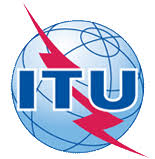ITU-T - SG16 - F.CECRequirements and reference framework of cloud-edge collaboration in industrial machine vision systems
With the development of industry, cloud computing and edge computing are widely used. Especially in the industrial machine vision system, with the increase of data-intensive applications and computing-intensive applications, it is necessary to use the powerful computing capabilities and communication resources of cloud computing, collaborate with the short-time response capabilities of edge computing to realize and complete corresponding application requests. Through collaborative work, the value of edge computing and cloud computing will be maximized, thereby effectively improving the performance of industrial machine vision systems.
Cloud-edge collaboration technology is a collaborative method of cloud computing and edge computing, including data collaboration, resource collaboration, intelligent collaboration, service collaboration and application collaboration. At the same time, cloud-edge collaboration in industrial machine vision system will meet the needs of intelligent analysis and real-time response business in different scenarios.
This Recommendation specifies requirements and reference framework of cloud-edge collaboration in industrial machine vision system.
